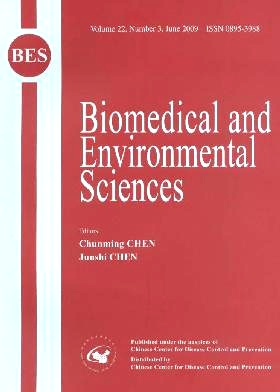Toxicity and Carcinogenicity of Ozone in Combination with 4-(N-methyl-N-nitrosamino)-1-(3-pyridyl)-1-butanone and Dibutyl Phthalate in B6C3F1 Mice for 16 and 32 Weeks
-
Key words:
- Ozone /
- NNK /
- DBP /
- Combined treatment /
- Toxicity /
- Carcinogenicity
Abstract: Objective To evaluate the toxic and carcinogenic potential of ozone alone or in combination with 4-(N-methyl-N-nitrosamino)-1-(3-pyddyl)-1-butanone (NNK) and/or dibutyl phthalate (DBP). Methods Male and female B6C3F1 mice were exposed,through inhalation,intravenous administration and diet,to 0.5 ppm of ozone,1.0 mg/kg of NNK and 5000 ppm of DBP,individually and in combination for 16 and 32 weeks. Results No treatment-related death was seen,but significant differences in body and organ weights between control and treated mice were observed during the study.No incidence of lung tumor incidence was recorded in mice exposed to either ozone alone or combined treatment.Oviductal carcinomas were observed in female mice exposed to ozone or DBP alone for 16 weeks and ozone in combination with NNK and DBP for 32 weeks. Conclusion Although ozone alone and in conjunction with NNK and/or DBP does not induce lung cancer under our experimental conditions,they induce oviductal carcinomas in B6C3F1 mice.
| Citation: | MIN YOUNG KIM, M YUNG CHO. Toxicity and Carcinogenicity of Ozone in Combination with 4-(N-methyl-N-nitrosamino)-1-(3-pyridyl)-1-butanone and Dibutyl Phthalate in B6C3F1 Mice for 16 and 32 Weeks[J]. Biomedical and Environmental Sciences, 2009, 22(3): 216-222. |







 Quick Links
Quick Links
 DownLoad:
DownLoad: